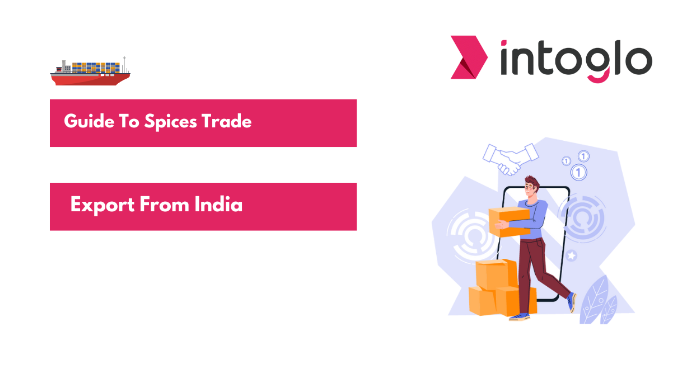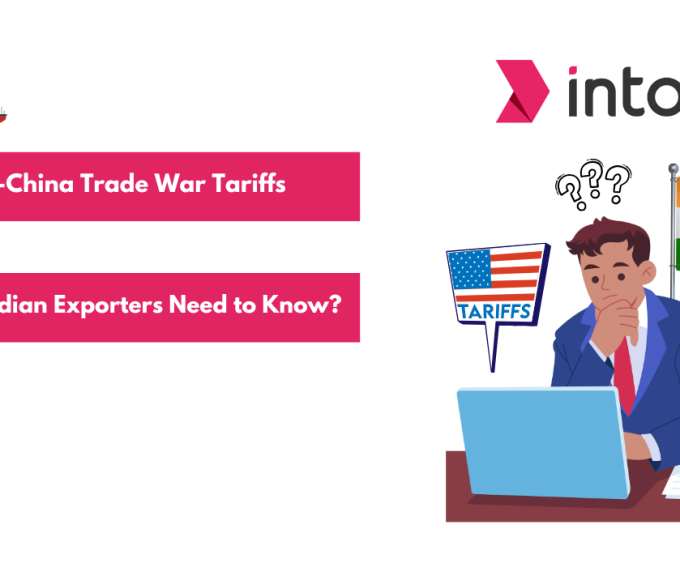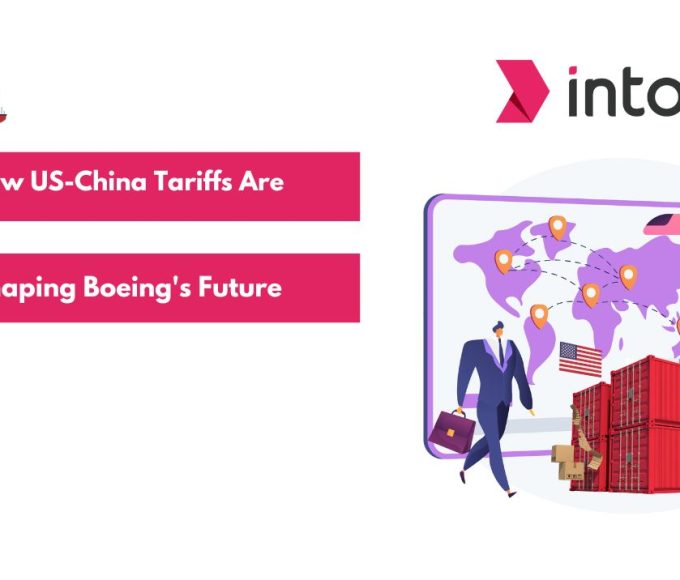Indian spices have long held a prestigious position in the global culinary landscape, serving as the foundation for many renowned dishes worldwide. In fiscal year 2023, the export value of spices from India amounted to over 304 billion Indian rupees. This was an increase compared to the previous fiscal year, when the export value of spices was over 290 billion rupees., reflecting their widespread popularity and demand.
This dominance can be attributed to several factors, including the rich diversity of flavors, the traditional and cultural significance, and the extensive use of various cuisines across the globe. Indian spices are not only prized for their unique taste profiles but also their health benefits and versatility in both traditional and contemporary culinary applications.
Here’s a look at India’s spice export prowess with some recent statistics (as of July 2024):
- Top Spot Secured: India remains the world’s largest exporter of spices, with exports reaching an all-time high of USD 4.46 billion in FY 2023-24.
- Aromatic Impact: From 2016-17 to 2022-23, the total number of spices exported from India grew at a CAGR (Compound Annual Growth Rate) of 5.85%.
- Fiery Success Story: Chilies continue to reign supreme as India’s leading spice export, with a significant share of the USD 20.2 billion global chili pepper market in 2023.
These figures show that India’s spice industry is a powerhouse, consistently exceeding expectations and captivating the world with its flavorful treasures. But what lies behind this success story? Let’s learn more about it.
Overview of India’s Leadership in the Global Spice Market
India’s leadership in the spice trade is nothing new. Steeped in history and blessed with diverse growing conditions, the country boasts the title of the world’s largest producer, consumer, and exporter of spices.
The sheer variety is staggering—India cultivates 75 of the 109 spices recognized by the International Organization for Standardization (ISO), accounting for half of the global spice trade. Imagine the explosion of aromas and flavors!
Beyond the Kitchen: A Global Allure
Indian spices aren’t just about tantalizing taste buds. They’ve been revered for centuries for their medicinal properties, adding another dimension to their global significance. From turmeric’s anti-inflammatory properties to cardamom’s digestive benefits, Indian spices are woven into the fabric of traditional medicine worldwide.
2022-23 Statistics on Spice Production and Export Volumes in India
Let’s get down to brass tacks. In 2022-23, India’s spice production reached 11.14 million tonnes, with chili, cumin, and turmeric leading the pack.
The figures for exports are equally impressive. In the same year, India exported US$3.78 billion of spices, solidifying its position as a global leader. These numbers paint a clear picture: India’s spice industry is a powerhouse with no signs of slowing down.
This is just the first chapter in the story of India’s captivating spices. In the next section, we’ll explore the key spices produced in India and exported from India.
Key Spices Produced and Exported
Now that we’ve established India’s reign as the global spice king let’s get granular and explore the specific spices that drive this dominance.
Here’s a glimpse into the most-produced and exported spices from India:
- Chilis – This fiery favorite is India’s leading spice export. From the fiery chilies of Andhra Pradesh to the subtler Kashmiri varieties, Indian chilies add a kick to cuisines worldwide.
- Turmeric and Cumin – Turmeric, the golden warrior of Indian spices, boasts a powerful presence in production and export. With its warm, earthy aroma, Cumin follows closely behind, adding depth to curries and beyond.
- Cardamom and Black Pepper – Cardamom, the “queen of spices,” is another Indian export heavyweight. Its delicate flavor profile elevates sweet and savory dishes alike. Black pepper, the king of spices, adds a touch of heat and complexity to countless global cuisines.
- Other Spices– Don’t underestimate the supporting players! Ginger, coriander, fennel, celery, and fenugreek contribute significantly to India’s spice production and export. These versatile spices add layers of flavor and aroma to dishes worldwide.
Overview of Major Spice-Producing States in India
India’s diverse geography is a perfect breeding ground for various spices. Here are some of the vital spice-producing states:
- Madhya Pradesh—This central Indian state is the world leader in producing chilies, coriander, and cumin.
- Rajasthan and Gujarat – Arid Rajasthan is known for its chilies and fenugreek, while Gujarat contributes cumin, coriander, and fennel to the national spice basket.
- Andhra Pradesh, Telangana, Karnataka, and Kerala – South India is a treasure trove of spices. Andhra Pradesh and Telangana are chili powerhouses, while Karnataka is known for its cardamom, chilies, and coriander. Kerala, famed for its black pepper and cardamom, adds a unique touch to the national spice profile.
Top Export Destinations for Indian Spices
The captivating journey of Indian spices doesn’t end at production and export. Let’s explore the countries and regions eagerly awaiting these flavorful treasures.
Leading importing countries and regions for Indian spices
India’s spices tantalize taste buds across the globe. Here are some of the leading importers:
- South Asian Countries: China remains a significant importer of Indian spices, driven by their extensive use in traditional Chinese cuisine. Countries like Bangladesh, Sri Lanka, and Thailand, with deep cultural ties to India, are also significant importers.
- USA and UK: The United States has emerged as a major importer of Indian spices, with a growing demand for turmeric, cumin, and chilies to infuse their culinary creations. European nations, notably the United Kingdom and Germany, are also enthusiastic consumers of Indian spices, incorporating them into curries and other dishes.
Interested in exporting your spices to the USA? Contact us today to get started!
- Middle Eastern Countries: The Middle East, a historic hub for the spice trade, continues to be a significant importer. The United Arab Emirates, a key re-export center, distributes Indian spices throughout the region, catering to a love for bold flavors and fragrant dishes.
By catering to diverse demands and capitalizing on export trends, India ensures its spices continue their captivating journey worldwide.
How to Begin Exporting Spices from India
The world craves the magic of Indian spices, and you have the vision to be a part of it. But where do you begin? This guide will equip you with the knowledge to navigate the exciting world of spice exporting from India.
A Step-by-Step Guide
1. Chart Your Course: Research the spice market and identify your niche before diving in. What specific spices will you focus on? Which countries hold the most potential for your offerings?
2. Lay the Foundation: Register your business and obtain an Importer-Exporter Code (IEC) from the Directorate General of Foreign Trade (DGFT). This is your passport to the world of international trade.
3. Become a Spice Authority: Secure a Certificate of Registration as Exporter of Spices (CRES) from the Spices Board. This demonstrates your expertise and ensures compliance with quality standards.
4. Gear Up: Secure an Authorized Dealer (AD) code from your bank to handle foreign currency transactions. Explore logistics options and establish relationships with reliable shipping companies.
5. Set up a Network: Network with established spice exporters, industry associations, and potential buyers. Participating in trade shows can be a great way to gain exposure.
6. Seal the Deal: Negotiate contracts with international buyers, ensuring clarity on pricing, quality specifications, and delivery terms. Secure Letters of Credit (LCs) or other payment guarantees to protect your interests.
7. Focus on Quality: Partner with reliable farmers and processors to ensure consistent quality. Implement stringent quality control measures to meet international food safety standards.
Essential Documentation and Licenses
- Importer-Exporter Code (IEC): This mandatory code allows you to import and export goods from India.
- Certificate of Registration as Exporter of Spices (CRES): Issued by the Spices Board, this certifies your compliance with quality standards for spice exports.
- Goods and Service Tax (GST) Registration: You must obtain a GST registration to comply with indirect export tax regulations.
- Phytosanitary Certificate: This document, issued by the plant quarantine authorities, certifies that your spices are free from pests and diseases.
- Export Declaration Form (EDF): Electronically filed with customs authorities, this form details your shipment information.
Understanding the Landscape: Export Business Licenses and Certifications
- Export Promotion Councils (EPCs): These government-supported bodies provide valuable support and guidance to exporters, including market research and trade promotion services.
- Agricultural and Processed Food Products Export Development Authority (APEDA): This government agency promotes exporting agricultural products, including spices.
- ISO Certifications: Obtaining certifications like ISO 22000 (Food Safety Management System) can enhance your credibility in international markets.
Challenges and Considerations for New Spice Exporters
- Competition: The Indian spice market is fiercely competitive. Research your competitors and develop a unique selling proposition.
- Compliance: Keeping up-to-date with regulations and quality standards can be challenging. Partner with consultants or logistics companies to ensure smooth operations.
- Minimum Order Quantities (MOQs): International buyers often have high MOQs. Consider partnering with other exporters to fulfill larger orders.
- Investment Considerations: Spice export requires investment in packaging, storage facilities, and quality control measures. Plan your finances accordingly.
By following these steps, securing the necessary licenses, and understanding the challenges, you can embark on a successful journey as an Indian spice exporter.
Remember, the world awaits the vibrant flavors and rich heritage embodied in every shipment of Indian spices.
Also Read: Top Freight Forwarding Companies In India In 2024
Spices Board of India and Government Initiatives
The journey of Indian spices from farm to foreign table isn’t without its guiding lights. In this section, we’ll explore the invaluable role of the Spices Board of India and government initiatives in supporting spice exporters.
The Spices Board is your one-stop shop for spice export in India. Established in 1987, this government body plays a pivotal role in:
- Export Promotion: The Spices Board organizes trade shows, buyer-seller meets, and market research initiatives to connect Indian exporters with international buyers.
- Quality Control: They establish and enforce quality standards for spices meant for export, ensuring Indian offerings meet international expectations.
- Skill Development: The Spices Board provides training programs for farmers, processors, and exporters to enhance their knowledge and expertise.
Government’s Schemes and Incentives
The Indian government actively supports spice exporters through various schemes and incentives:
- Market Development Assistance (MDA): This scheme provides financial assistance to exporters participating in international trade shows and promotional activities.
- Market Access Initiative (MAI): This initiative helps exporters overcome technical barriers to trade by facilitating compliance with international standards.
- Duty Credit Schemes: Schemes like Merchandise Exports from India Scheme (MEIS) offer duty credit benefits on exported spices, making them more price-competitive in the global market.
Building Infrastructure
Recognizing the need for efficient processing facilities, the government has launched the initiative of spice parks across India. These parks provide:
- Shared Processing Facilities: Exporters, especially small and medium enterprises (SMEs), can access state-of-the-art processing units without heavy investments in individual infrastructure.
- Testing Laboratories: Spices Parks houses laboratories equipped to conduct quality checks, ensuring adherence to international standards.
- Cold Storage Facilities: These facilities help maintain the freshness and quality of spices during storage and transportation.
Support Programs for Organic Spice Promotion
The government actively promotes organic spice cultivation through initiatives like:
- Mission Organic Value Chain Development in North East Region (MOVCDNER): This mission aims to increase organic spice production in the Northeast, which is known for its ideal growing conditions.
- National Programme for Organic Production (NPOP): NPOP provides a certification framework for organic produce, enabling Indian exporters to cater to the growing global demand for organic spices.
By leveraging the support offered by the Spices Board, government schemes, and infrastructure initiatives, Indian spice exporters can confidently navigate the global market. With a focus on quality, innovation, and sustainability, India’s reign as the world’s spice king will continue for years.
Also Read: Differences Between A Consignor And Consignee: Definitions And Meanings
Marketing and Branding for Spice Exporters
The world craves the magic of Indian spices, but in today’s competitive landscape, offering high-quality products isn’t enough. It’s time to unleash the power of branding and digital marketing to conquer the global spice trade truly.
In today’s digital age, consumers are just a click away. Here’s why branding and digital marketing are crucial for Indian spice exporters:
- Standing Out in a Crowded Market: A strong brand identity differentiates you.
- Building Trust and Credibility: A well-crafted brand story assures buyers of your commitment to quality and heritage.
- Connecting with Global Audiences: Digital marketing allows you to reach new customers worldwide, promoting your spices beyond geographical limitations.
Strategies for Building a Global Brand for Indian Spices
Here are some key strategies to build a powerful global brand for your Indian spices:
- Craft a Compelling Story: Highlight the rich heritage of Indian spices, their connection to traditional medicine, and the unique flavors they bring to the table.
- Embrace Visual Storytelling: Develop eye-catching packaging that reflects the vibrancy of Indian spices. Utilize high-quality photos and videos showcasing your products in use.
- Target the Right Audience: Identify your ideal customer – health-conscious cooks, adventurous foodies, or budget-minded families – and tailor your messaging accordingly.
- Harness the Power of Digital Marketing: Build a user-friendly website that showcases your products and brand story. Use social media platforms like Instagram and Facebook to share recipes and cooking tips and engage with potential customers.
- Embrace E-commerce: Partner with online marketplaces or establish your own e-commerce platform to make it easy for international buyers to discover and purchase your spices.
Examples of Successful Indian Spice Brands in the International Market
Here are some inspiring examples of Indian spice brands making waves in the international market:
- MTR Foods: This renowned Indian brand offers a wide range of spices, leveraging its rich heritage and focus on authentic flavors.
- Shan Foods: A global leader in Pakistani spices, Shan has successfully captured international markets with its convenient spice blends and innovative packaging.
- Deep Foods: This Indian brand emphasizes the health benefits of its spices, catering to the growing demand for natural and functional ingredients.
By implementing these branding and digital marketing strategies, Indian spice exporters can transform their businesses from local players to global stars. Remember, a strong brand is a secret ingredient that will elevate your spices from mere commodities to coveted treasures in kitchens worldwide.
Challenges Faced by Indian Spice Exporters
The journey of Indian spices to global dominance isn’t without its hurdles. Let’s explore some key challenges faced by Indian spice exporters, along with strategies to navigate them successfully.
Quality Control and Competition
Despite India’s reputation for quality spices, challenges persist:
- Maintaining Consistency: Ensuring consistent quality across vast production areas can be difficult. Impurities or contamination can lead to rejections and damage brand reputation.
- Fierce Competition: India faces stiff competition from other spice-producing countries like Vietnam and Sri Lanka, often offering lower prices.
Overcoming the Obstacles
Here are some strategies to combat quality control and competition challenges:
- Invest in Quality Infrastructure: Modernize processing facilities and storage to maintain consistent quality. Implement stringent quality control measures throughout the supply chain.
- Embrace Certifications: To demonstrate your commitment to quality, obtain international certifications like ISO 22000 (Food Safety Management System).
- Focus on Value Addition: Go beyond basic spices. Offer pre-mixes, spice blends, and innovative packaging to cater to convenience-seeking consumers and stand out.
- Packaging Prowess: Uninspired packaging can make your spices blend into the background on store shelves. Invest in innovative, sustainable packaging that reflects the premium quality of your product.
- Distribution Dilemmas: Reaching international markets requires efficient logistics networks. Partner with reliable shipping companies and explore consolidation options to reduce costs.
- Labor Constraints: Finding skilled labor for processing and packaging can be challenging. Explore automation solutions where feasible and invest in training programs for your workforce.
Emerging Market Risks: Adapting to a Changing Landscape
The global spice trade is constantly evolving. Here’s how Indian exporters can adapt:
- Geopolitical Tensions: Trade wars and political instability can disrupt supply chains. Diversify your export markets to mitigate risk.
- Fluctuating Currency Exchange Rates: Hedging strategies can help protect your business from currency fluctuations.
- Shifting Consumer Preferences: Consumers are increasingly health-conscious and environmentally aware. To cater to these evolving preferences, focus on organic and sustainable farming practices.
By acknowledging these challenges and implementing strategic solutions, Indian spice exporters can navigate the ever-changing landscape and solidify their position as the world’s leading spice supplier.
Remember, a focus on quality, innovation, and adaptability will ensure that Indian spices continue to tantalize taste buds and conquer kitchens worldwide for years to come.
Future Trends and Opportunities in Spice Export
As we peer into the future, let’s explore the trends shaping the global spice demand, identify potential growth areas for Indian exporters, and see how technology will revolutionize the spice trade.
Here are some key trends that will influence the global spice market:
- Health and Wellness Focus: Consumers increasingly seek spices for their health benefits. Expect a growing demand for spices like turmeric, ginger, and cardamom with perceived medicinal properties.
- Ethnic Cuisine Cravings: The popularity of global cuisines, particularly those from Southeast Asia and India, will continue to drive demand for authentic spices.
- Convenience Reigns Supreme: Busy lifestyles will fuel the demand for pre-mixed spice blends, single-serve packets, and ready-to-use spice pastes.
- Sustainability in Season: Environmentally conscious consumers will favor spices sourced from sustainable and ethical farming practices.
New Horizons: Growth Areas and Emerging Markets
For Indian spice exporters, the world is brimming with opportunities:
- Unexplored Territories: Africa and Latin America present exciting potential markets with growing disposable income and a burgeoning interest in global cuisines.
- The Niche Spice Revolution: Consumers are seeking unique and rare spices. To cater to this niche market, focus on cultivating and exporting specialty Indian spices like black cardamom or long pepper.
- Riding the E-commerce Wave: The growth of online food retail presents a lucrative opportunity for Indian exporters to reach a wider global audience.
Technological Advancements and their Impact
Technology will play a transformative role in the spice trade:
- Traceability and Transparency: Blockchain technology can ensure spice traceability, from farm to fork, building trust with quality-conscious consumers.
- Precision Agriculture: Smart farming techniques can optimize yields, reduce waste, and ensure consistent quality for Indian spices.
- AI-Powered Spice Blending: Artificial intelligence can personalize spice blends based on individual taste preferences and dietary needs.
By capitalizing on these emerging trends, exploring new markets, and embracing technological advancements, Indian spice exporters can solidify their position as global leaders. As the world’s insatiable appetite for flavor grows, Indian spices will remain at the forefront, adding a touch of magic to kitchens worldwide.
Also Read: What Is Demurrage? Practical Tips To Avoid Demurrage Fees In Cross-Border Shipping
Conclusion
As you’ve discovered, the global spice trade is a vibrant tapestry woven with tradition, innovation, and immense potential. India, the undisputed king of spices, is poised to continue its reign. But navigating the complexities of international export can be daunting.
This is where Intoglo steps in. We are your one-stop shop for seamless spice export success. Our team of experts brings a wealth of experience in logistics, compliance, and market access strategies. We’ll partner with you to:
Navigate export regulations: Our team will ensure your shipments meet all quality and documentation requirements, minimizing delays and maximizing efficiency.
Don’t let logistical hurdles or complexities dim the brilliance of your Indian spices. Partner with Intoglo and embark on a successful spice export journey. Contact us today for a free consultation and unlock a world of flavor awaits!
FAQs on Conquering the Spice Route: A Guide for Indian Exporters
Your journey as an Indian spice exporter promises to be an exciting adventure. Here are some answers to frequently asked questions (FAQs) to equip you for success:
1. How to find top importing countries for specific Indian spice?
The ideal market for your spices depends on the specific spice you offer. Here’s how to find the top importing countries:
- Spices Board of India Website: The Spices Board website provides valuable resources, including export statistics for various spices. You can find data on the top importing countries for specific spices at https://www.indianspices.com/.
- International Trade Statistics Databases: Utilize resources like the United Nations Comtrade database (https://comtrade.un.org/) to explore trade data and identify countries with high import volumes for your chosen spice.
- Industry Reports and Publications: Market research reports from reputable firms can provide insights into global spice import trends and identify potential markets.
2. What is the role of e-commerce in boosting spice exports?
E-commerce is revolutionizing the spice trade:
- Reaching a Wider Audience: Sell directly to consumers worldwide through online marketplaces like Amazon or Alibaba.
- Reduced Entry Barriers: E-commerce eliminates geographical limitations, allowing you to connect with buyers who might not have access to your spices.
- Data-Driven Marketing: Utilize e-commerce platforms to collect valuable customer data and tailor your marketing strategies to specific regions and preferences.
3. What are the tips for new exporters on navigating international markets?
Don’t be afraid to go global! Research your market, comply with regulations, and tailor your marketing. Secure logistics and payments and build strong networks. The world awaits your unique product!









Leave a comment